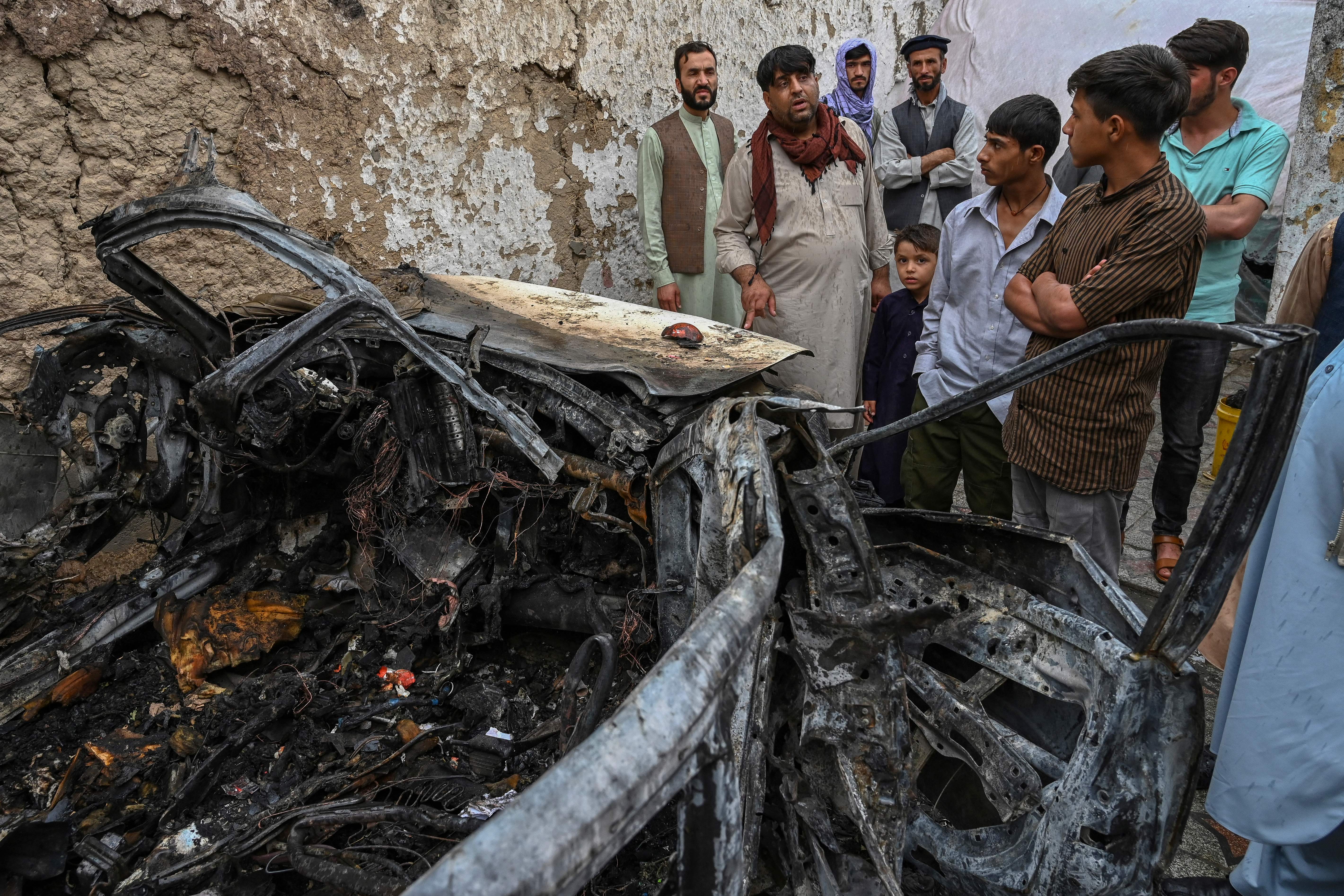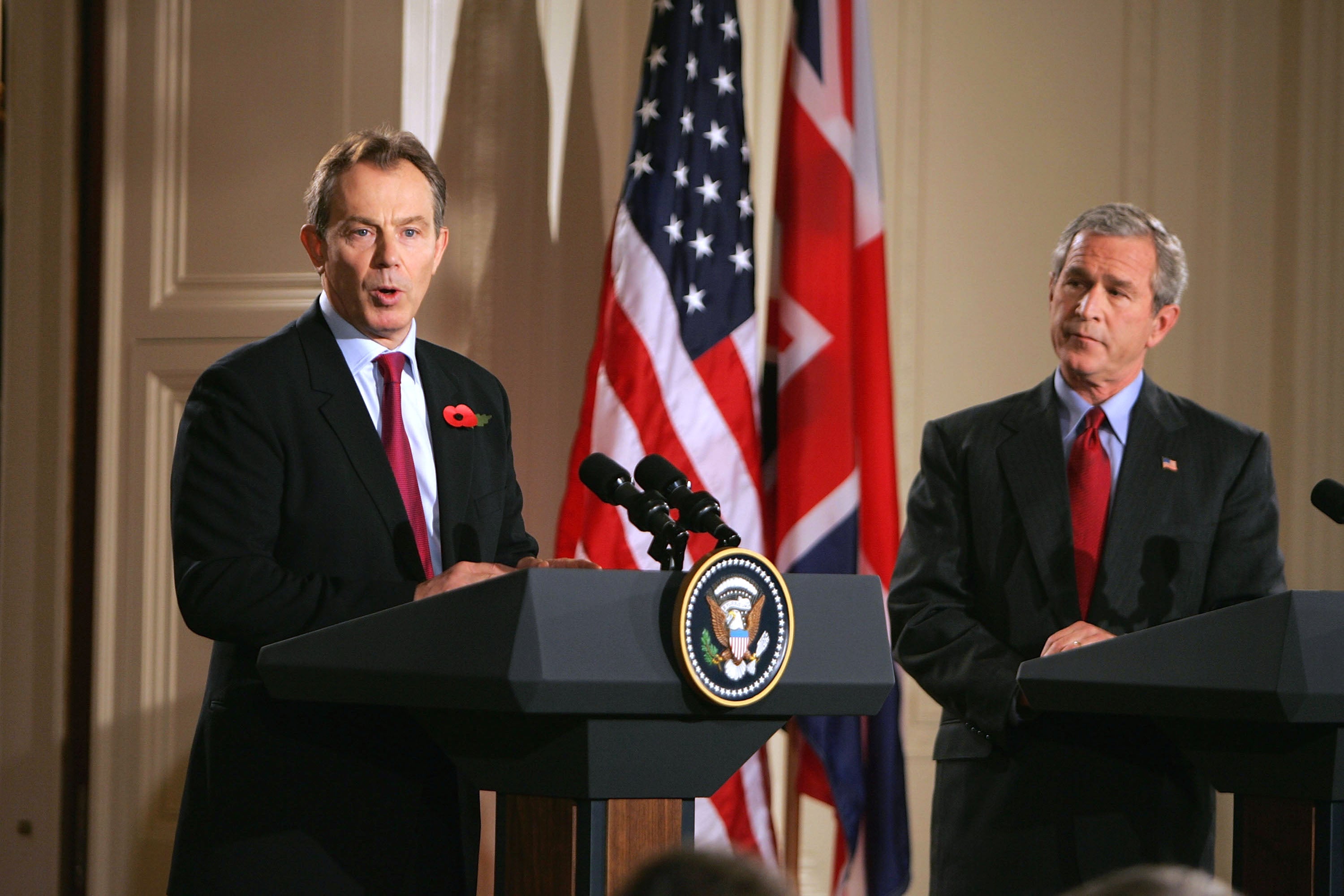Forgotten victims of 9/11: The 363,000 civilians killed during the War on Terror
We may never know how many innocent people US forces killed during the War on Terror – and that’s intentional, writes Josh Marcus


Your support helps us to tell the story
From reproductive rights to climate change to Big Tech, The Independent is on the ground when the story is developing. Whether it's investigating the financials of Elon Musk's pro-Trump PAC or producing our latest documentary, 'The A Word', which shines a light on the American women fighting for reproductive rights, we know how important it is to parse out the facts from the messaging.
At such a critical moment in US history, we need reporters on the ground. Your donation allows us to keep sending journalists to speak to both sides of the story.
The Independent is trusted by Americans across the entire political spectrum. And unlike many other quality news outlets, we choose not to lock Americans out of our reporting and analysis with paywalls. We believe quality journalism should be available to everyone, paid for by those who can afford it.
Your support makes all the difference.Ahmad Naser came to Kabul to escape the Taliban. The 30-year-old had been a guard at the American military’s Camp Lawton, in Herat, and had applied for a US Special Immigrant Visa to leave the country, given the risk of reprisals. His fears were directed at the wrong army.
In the early evening of 29 August, the day before the last American military planes left Afghanistan, a US drone lit up Khwaja Burga, a densely populated district in Kabul. The strike killed a total of 10 civilians, including Mr Naser and seven children, according to family members. They had reportedly been coming outside to greet relative Zemari Ahmadi, also killed, who worked with a US aid group distributing food to refugees.
The US initially praised the strike for “eliminating an imminent Isis-K threat” to the Kabul airport, adding that it didn’t have indications of any apparent civilian deaths in the residential neighborhood it just hit with a missile. US Central Command (CENTCOM) eventually issued an update, saying, “It is unclear what may have happened, and we are investigating further”, though it maintained it had foiled an Isis plot. Relatives of the deceased insist no one present was a terrorist.
“The Americans said the airstrike killed Daesh members,” a neighbor toldTheWashington Post, using the Arabic abbreviation for Isis. “Where is Daesh here? Were these children Daesh?”
After the Kabul strike, Pentagon spokesperson John F. Kirby told NPR: “No military on Earth does as much as we do to try to prevent civilian casualties.”
Even if that is true, Ahmad Naser will very likely be forgotten in the US, where the vast, uncounted mass of civilians slain by Americans remains far outside the popular understanding of 9/11. On that day, 2,977 people were killed, and the US has avenged these innocents many hundreds of times over. US airstrikes alone have killed as many as 48,308 civilians, according to conflict monitor Airwars.
But neither the public, nor the victims’ families, will likely ever get a full accounting of the deaths. The American government has steadfastly avoided true accountability on the ‘War on Terror’, from explicitly refusing to count bodies, to half-heartedly committing to transparency, to outright revelling in the killing of innocents.
Each year, America and the world mourns those lost in the atrocities of 9/11. Yet 20 years later, we still don’t know how many others should be mourned along with them for the atrocities that followed.
More than 363,000 civilians have been killed in the War on Terror, according to an estimate from Brown University’s Costs of War Project. . And many times more people have been slain after the battles are over. Cumulatively, the overall civilian death toll could very well exceed 1 million people, when taking into account indirect deaths from war that come from destroyed infrastructure and hospitals, disease, and displacement, Neta C. Crawford, a Boston University political science professor who directs the Costs of War project, told The Independent.
And that’s just what we know from afar.
Because Afghanistan, Iraq, Syria, Pakistan, Yemen and other post-9/11 battlefields are war zones – where the US has launched more than an estimated 90,000 strikes – large-scale attempts from researchers to count the dead remain difficult.
“It’s going to be very hard until these places are peaceful to figure that out,” Ms Crawford said.
The biggest hurdle, however, has been the US government itself. After years of agitation from families, rights groups, and journalists, the US military began publicly disclosing how many civilians it kills each year in 2018, but it regularly undercounts that figure to the point of near-irrelevance. A New York Times investigation, for example, found that during the air campaign against Isis in Iraq, 31 times more civilians were killed than officially acknowledged.
The US military tends to look into cases when someone else, be they a grief-stricken family or a crusading journalist, demands more information. Some estimates suggest two thirds of US casualty estimates come from referrals, rather than internal investigations. Inquiries that do go forward, on attacks such as drone strikes, are often threadbare at best.
“They’re not speaking to local witnesses,” said Aisha Dennis of Reprieve, a civil rights organisation that advocates for victims of drone strikes. “All of the basic investigatory tools that you would normally use to find out what happened in a crime scene or when somebody has been killed ordinarily, they’re not using those.”
The Independent requested comment from CENTCOM, which oversees US forces in the Middle East, on the number of civilians killed during the War on Terror. A spokesperson recommended submitting a Freedom of Information Act request, a public records request that often takes months or years to get a satisfactory reply to, and declined to answer policy questions about how the military counts civilian deaths.
Many attacks that kill civilians are never officially acknowledged in the first place. In 2019, the Trump administration limited the number of air strikes US forces had to disclose to the public, and numerous attacks go unconfirmed, even if the effects on the ground are very real.
“It’s a manifestation of the project of elite impunity that has always run through this entire enterprise and a manifestation of American exceptionalism, whereby the people that America kills are not somehow as real human beings as Americans are,” said Pulitzer Prize-winning national security reporter Spencer Ackerman, author of Reign of Terror, a recent history of the War on Terror. “The United States has made detailed announcements every time a service member was killed in the War on Terror. They know how to count this. They choose not to do it.”
This impunity has been a central feature of the War on Terror for the last 20 years, regardless of whether a Democrat or Republican was in the White House.
During the Bush administration, American officials talked openly about how unimportant they felt counting civilian deaths was. Their argument was both that body counts were “not knowable”, as a CENTCOM spokesperson once put it, but also not helpful. They worried a detailed picture of the war could turn the public against it, as had happened during the Vietnam War.
“Having been a rifle platoon leader in Vietnam, asking questions from Washington about how many dead today is truly counterproductive,” general Peter Pace said in 2002.
“You know, we don’t do body counts,’’ general Tommy R. Franks added that same year.
As late as 2006, well into serious fighting in Iraq and Afghanistan, George Bush told a group of conservative reporters, “We have made a conscious effort not to be a body-count team.”

“That was a lie,” said Chris Woods, co-founder of Airwars, a group that meticulously tracks civilian casualties.
The information was always there, Mr Woods said, it just hasn’t been made public.
“We found out from the WikiLeaks releases on Afghanistan and Iraq that of course the US was counting civilian casualties, not only from its own actions, but from terrorists like Al Qaeda. It just wasn’t releasing its own information.”
As a result, the early, crucial years of the War on Terror remain factually hazy, even as their geopolitical impact was fundamental.
There was a measure of hope that the administration of Barack Obama, a former constitutional law professor, would be different, more humane.
In 2009, the commander of US forces in Afghanistan at the time, general Stanley McChrystal, made the rules for airstrikes far stricter, drastically reducing the number of unintended casualties for the next few years.
“We’re going to lose this f****** war if we don’t stop killing civilians,” he told his staff, according to his memoir.
Mr Obama also instituted more inter-agency deliberation on issues like civilian harm before launching strikes, and late in his administration, signed an executive order mandating the US train its personnel to protect civilians, accept responsibility for attacks, and make regular public reports about strikes outside of traditional war zones, explaining the general differences between official and NGO analyses of the killings.
But President Obama was no dove. He pioneered the most controversial weapon in the US arsenal: unmanned combat drones, launching 10 times more strikes than his predecessor, publicly disclosing casualty numbers that fell far below outsider estimates or made dubious claims to killing not a single civilian.
Civilians and non-combatants were, and are, often killed in “signature strikes”, launched not at a known target, but rather individuals who seemed like they might be terrorists based on their personal networks, as well activities such as driving in convoys or carrying weapons, a common practice for non-militant young men in war zones in the Middle East.
Mistakes were rampant. In Yemen, for example, a cluster of five US drone strikes and a special forces raid killed 34 members of two families, including nine children, the youngest being a three-month-old baby shot by a US Navy SEAL. One of these attacks, in 2013, killed 12 men in a wedding convoy, all farmers and construction workers, leaving 73 children without breadwinners.
The Yemeni government and United Nations both condemned the strike. The US has never issued an apology.
“People in the village are afraid to gather,” Abdullah Mabkhout Al Ameri, some of whose family was killed during the strikes, told Reprieve. “Everybody feels that they are a target. We thought these drones only kill wanted people, never innocent people. Some people now when they walk, they just keep staring at the sky.”
The unmanned aircraft, often portrayed as silent, surgically precise weapons, make an audible buzz for those living underneath them. For many, it’s a sound on the numerous, obscure battlefields of the War on Terror that stands for accidental death far more than intentional peacekeeping.
Whatever safeguards were in place drifted off as the Obama administration confronted Isis in Iraq and Syria. The battle for Mosul, which one general called the “most constant heavy combat that we have [seen] probably since before Vietnam”, killed as many as eleven thousand civilians, 10 times more than the official US estimate.
“It’s been shockingly bad,” Mr Woods, of Airwars, said. “There have been periods when the US has done a better job of holding itself to account, admitting it, reducing it. Those periods are often short and often come about after really catastrophic local casualty numbers. The lessons that should’ve been institutionalised are almost immediately lost.”
Donald Trump, as he so often did, said the quiet part of US politics out loud. He explicitly fantasised about going after civilians on his campaign to “bomb the sh** out of Isis” and stop fighting a “politically correct war”, as he once put it.
“You have to take out their families,” he told Fox News in 2015, as he prepared to run for president.

He kept his campaign promises, ramping up the drone war even further in places like Somalia, and unleashing so many strikes on Afghanistan that one study found civilian casualties spiked 330 percent by December 2020. Meanwhile, the year before, Mr Trump rolled back the Obama mandate about disclosing civilian deaths outside conventional war zones, turning already murky, unofficial US wars into full-on data dark zones.
More than that, Donald Trump went out of his way to protect US service members accused of deliberately targeting civilians. He pardoned Clint Lorance, an Army lieutenant serving a 19-year sentence for ordering his men to fire on Afghan civilians. Mr Trump intervened to stop the war crimes prosecution of Eddie Gallagher, a Navy SEAL turned in by his own squad mates for alleged abuses like stabbing a teen Isis captive with a hunting knife, and targeting women and children while boasting that “burqas were flying”.
Both men deny wrongdoing. Mr Trump called them “great warriors” at a rally in Florida in 2019.
Whether the Biden administration will work against this pattern remains to be seen. The administration has withdrawn from Afghanistan entirely, and, as of July, had reportedly conducted an all-time low number of drone strikes. But a promised government-wide review of counter-terrorism policy is behind schedule, and the president has vowed, like three other presidents before him, to go after terror groups in Afghanistan.
“To Isis-K: We are not done with you yet,” Mr Biden said in a 31 August speech at the White House.
With no US military presence inside of Afghanistan, that will all but certainly mean more drone killings. That may mean more killed like Ahmad Naser and his family in Kabul.
Even if Mr Biden changes course, “we’ll never know” how many civilians the US has killed in the 9/11 wars, according to Mr Ackerman, the Reign of Terror author.
“It made the end of their existence an official secret,” he said. “It made them, in death, un-people. This isn’t just about what the US tells itself. It’s about what the US acknowledges it has done to hundreds of thousands of people.”
Many endeavour to “never forget” 9/11. But for those civilians killed by America, the US government has never allowed the public to remember.
This article was amended on 10 September 2021. It originally stated that American troops and operatives have killed more than 350,00 civilians since 9/11. This was incorrect. The figure of 350,000 includes all civilian deaths, from US forces but also from attacks by organisations such as ISIS.




Join our commenting forum
Join thought-provoking conversations, follow other Independent readers and see their replies
0Comments